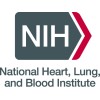
Real-time MRI Right Heart Catheterization Using Passive Catheters
Caridovascular DiseaseCongenital Heart Disease1 moreBackground: - Currently, heart catheterization procedures are guided by X-rays. Researchers are developing new techniques to perform heart catheterization without the use of X-rays by investigating possible uses of magnetic resonance imaging (MRI) scans. To study these uses, researchers are interested in performing a part of the standard X-ray catheterization procedure using MRI on individuals who are scheduled to have heart catheterization. Objectives: - To examine the safety and feasibility of right-heart catheterization using MRI-guided catheters. Eligibility: - Individuals at least 21 years of age who are undergoing a medically necessary heart catheterization procedure. Design: The research MRI procedure will be performed either before or after standard X-ray guided heart catheterization. Participants will be transferred from an X-ray table onto an MRI table and advanced into the scanner. Under MRI guidance, a MRI-compatible catheter will be used to measure blood pressure and blood oxygen levels in the heart, and MRI scanning will be performed for approximately 30 minutes.

Clinical Evaluation of Magnetic Resonance Imaging in Coronary Heart Disease-2
Coronary Heart DiseaseCE-MARC 2 is a randomised controlled trial to determine diagnosis and patient management in patients presenting to outpatient clinics with suspected stable angina. Cardiac Magnetic Resonance Imaging (at 3Tesla) will be evaluated prospectively against current best clinical practice (defined by international guidelines). The study hypothesis is that 3Tesla CMR-guided management of patients with suspected stable angina is superior to current clinical practice based on 1) the principles of the National Institutes for Clinical Excellence (NICE) CG95 guidelines (2010); 2) SPECT AHA appropriateness criteria, in terms of avoiding study-defined unnecessary invasive coronary angiography.

Pediatric Remote Ischemic Pre-conditioning Prior to Complex Cardiac Surgery
Congenital Heart DiseaseIschemia-reperfusion InjuryIn 2012, infants having surgery for congenital heart disease have a high survival. The investigators are now focused on improving how sick these infants become after surgery (short term outcomes) and their later neurodevelopment (long term outcomes). During heart surgery, cardiopulmonary bypass (CPB; the heart-lung machine) takes over heart function while the surgeon repairs the heart disease. During this surgery there are periods of time when the amount of blood going to the heart and brain is lower than usual, called "ischemia". Once the surgery is finished the blood going to the heart and brain is increased to normal again, called "reperfusion". This ischemia-reperfusion can cause injury to the heart, brain, and other organs, affecting the short and long term outcomes in these infants. Adult studies have shown that a short time of ischemia to the legs for 5-10 minutes [the legs are not damaged by a short time of ischemia, unlike the heart or brain], before severe ischemia to another distant vulnerable vital organ [like the heart or brain], can protect this other vital organ from ischemia-reperfusion injury. This is called "remote ischemic preconditioning" (RIPC). Our objective is to test whether RIPC before heart surgery can improve the recovery of the heart and brain after heart surgery in newborn babies with congenital heart disease. The investigators will test whether RIPC will result in lower peak lactate and troponin levels on the day after heart surgery. Lactate levels are a marker for how much the different tissues of the body suffer from ischemia-reperfusion injury. Troponin is released from damaged heart during ischemia-reperfusion. In our trial infants will be randomized to RIPC or control. This means each baby has an equal chance of being in one group or the other. The intervention group will have RIPC before surgery; the "control group" will not. The investigators hope this trial will lead to a larger study to test if RIPC results in fewer days on a breathing machine after surgery, lower mortality, and higher scores on neurodevelopmental tests at 2 years of age.

Passive Leg Raising Test to Predict Hypotension During Induction of Anesthesia in Patients Undergoing...
Ischemic Heart DiseaseCardiac Valve DiseaseHypotension frequently occurs during anesthesia induction. Preload decrease by anesthetics was often considered as one of main causes for this hypotension. However, the studies on this topic have been lacking. Dynamic preload indices are more suitable than static preload indices to predict the effect of preload changes. And, recently, passive leg raising test showed successful results to predict fluid responsiveness in patient with spontaneous ventilation. The investigators hypothesized that hypotension after induction of anesthesia is caused by decrease of preload by anesthetics and passive leg raising test could predict this hypotension. In this study, the investigators will try to evaluate whether passive leg raising induced hemodynamic changes could predict hypotension during anesthesia induction.

Feasability of Collaborative Care in the Secondary Prevention of Coronary Heart Disease
Coronary Heart DiseaseThe main focus of the pilot study is to evaluate the feasability and effectiveness of a collaborative care intervention for patients suffering from a coronary heart disease (CHD) with insufficient controlled health related risk factors in their lifestyle. The design of the study is a wait list control design. 30 patients will receive treatment immediately after submission, the other 30 after 6 months. An interdisciplinary team, including a care manager for each patient, will offer an individualized treatment plan, based on shared decision making for each patient to reduce risk factors and improve quality of life.

Use of Rosuvastatin in HIV-Infected Subjects to Modulate Cardiovascular Risks
HIV InfectionsHeart DiseaseThe hypothesis of this study is that 96 weeks of Rosuvastatin will be safe and effective in decreasing cardiovascular risk and bone loss in the HIV+ population.

Increasing Vitamin Intake and Physical Activity
Heart DiseasesDiabetes Mellitus3 moreTo help employees to adopt and maintain a healthy lifestyle, it is imperative to increase their self-management competencies. Aim of this research project is to evaluate an evidence- and theory-based computerized expert system in comparison to waiting control group. Employees will be treated psychologically and followed up over 18 months. The computerized expert system is expected to help employees significantly changing their lifestyle. The intervention is hypothesized to improve self-management competencies over and above the regular check-up at their medical appointment (i.e., waiting control group).

A Study of Commercial DEFINITY® to Monitor the Effects of the Heart's Pulmonary Artery Pressure...
Pulmonary Heart DiseaseThe purpose of this clinical research is to learn if DEFINITY® 416 will cause any adverse effects during Right Heart Catheterization. This research was requested by the FDA.

Endothelin-Receptor Blockade in Coronary Heart Disease
Coronary VesselsEndothelins1 moreEndothelin is a hormon that causes acute and chronic narrowing of heart vessels. The purpose of this study is to assess whether suppression of this activity by using two types of receptor antagonists can reduce this effect and thus improve blood supply of the heart muscle.

Cholesterol and Pharmacogenetic Study
HyperlipidemiaHypercholesterolemia2 moreThe overall objective of the CAP study was to determine genetic influences on efficacy of simvastatin treatment with regard to LDL cholesterol reduction and changes in other markers of cardiovascular disease risk.
